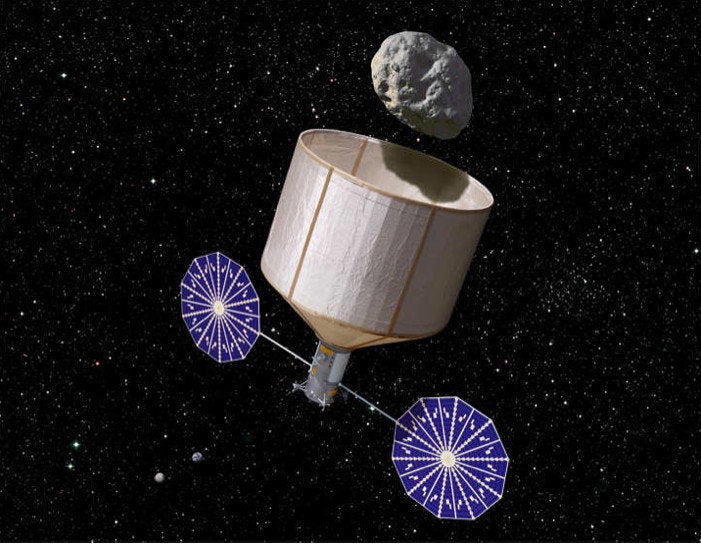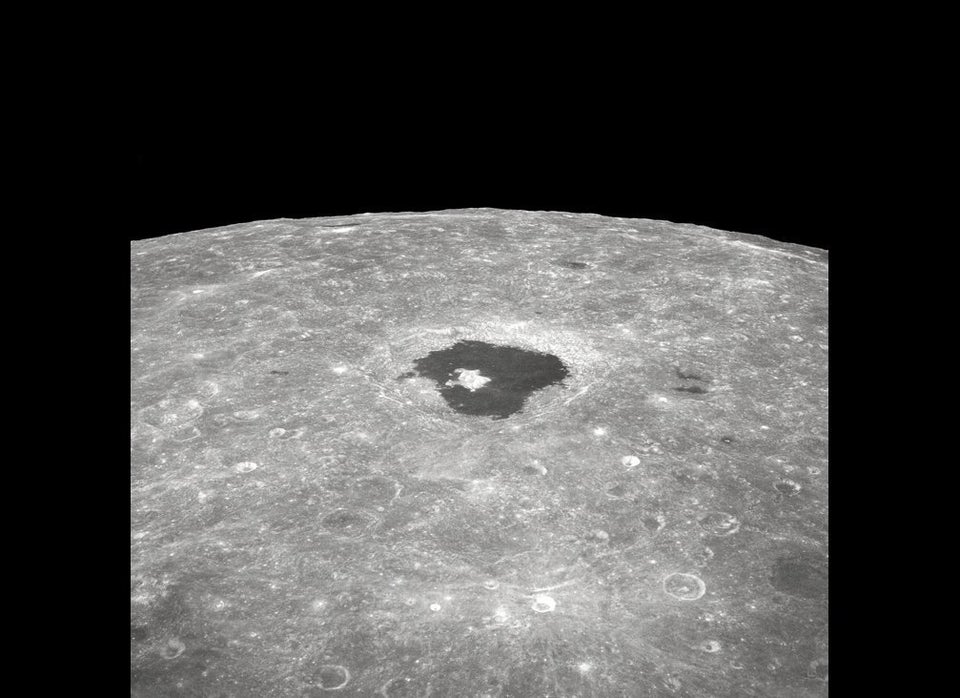
NASA is mulling a plan that calls for a robotic spacecraft to capture a near-Earth asteroid and drag it into the moon's orbit. Sounds far out, but a report from the Keck Institute for Space Studies in California indicates that the concept could be put into motion by 2025. Estimated cost? About $2.6 billion.
"Basically this was a first study," Dr. Louis Friedman, co-founder of The Planetary Society who serves as a co-author of the study, told The Huffington Post. "It was really to take what was an idea and consider whether or not it had enough validity to pursue it further, and I think we did that."
So nothing has been decided yet, but according to New Scientist:
The Keck team envisions launching a slow-moving spacecraft, propelled by solar-heated ions, on an Atlas V rocket. The craft would then propel itself out to a target asteroid, probably a small space rock about 7 metres wide. After studying it briefly, the robot would catch the asteroid in a bag measuring about 10 metres by 15 metres and head back towards the moon. Altogether it would take about six to 10 years to deliver the asteroid to lunar orbit.
Dr. Friedman and study co-author John Brophy of NASA's Jet Propulsion Laboratory pointed out in the report that finding the right asteroid would be vital: "the observation campaign to identify and adequately characterize attractive target asteroids for retrieval was one of the key challenges," Brophy told The Huffington Post in an email.
After all, the space rock must be small enough to tow along but big enough to target--it must be just right.
"The best way for NASA to reach both its asteroid goal and to launch humans into trans-lunar space -- beyond the moon -- is to use a robot spacecraft to retrieve and return to a safe lunar orbit a small, 500-ton asteroid," former astronaut Tom Jones, author of the upcoming book "Mission: Asteroid," told Space.com. "Astronauts and robot probes can explore and dissect this asteroid for science and commercial-scale resources… water being the most valuable."
Just why would NASA want to undertake such a mission? To find out whether space rocks could yield construction material or fuel, according to New Scientist.
Brophy told The Huffington Post:
The KISS study final report concluded that, “an asteroid retrieval mission could potentially impact an impressive range of NASA interests including: the establishment of an accessible, high-value target in cislunar space; near-term operational experience with astronaut crews in the vicinity of an asteroid; a new synergy between robotic and human missions in which robotic spacecraft return resources for human exploitation and use in space; the potential to jump-start an entire industry based on in situ resource utilization; expansion of international cooperation in space; and planetary defense.”

